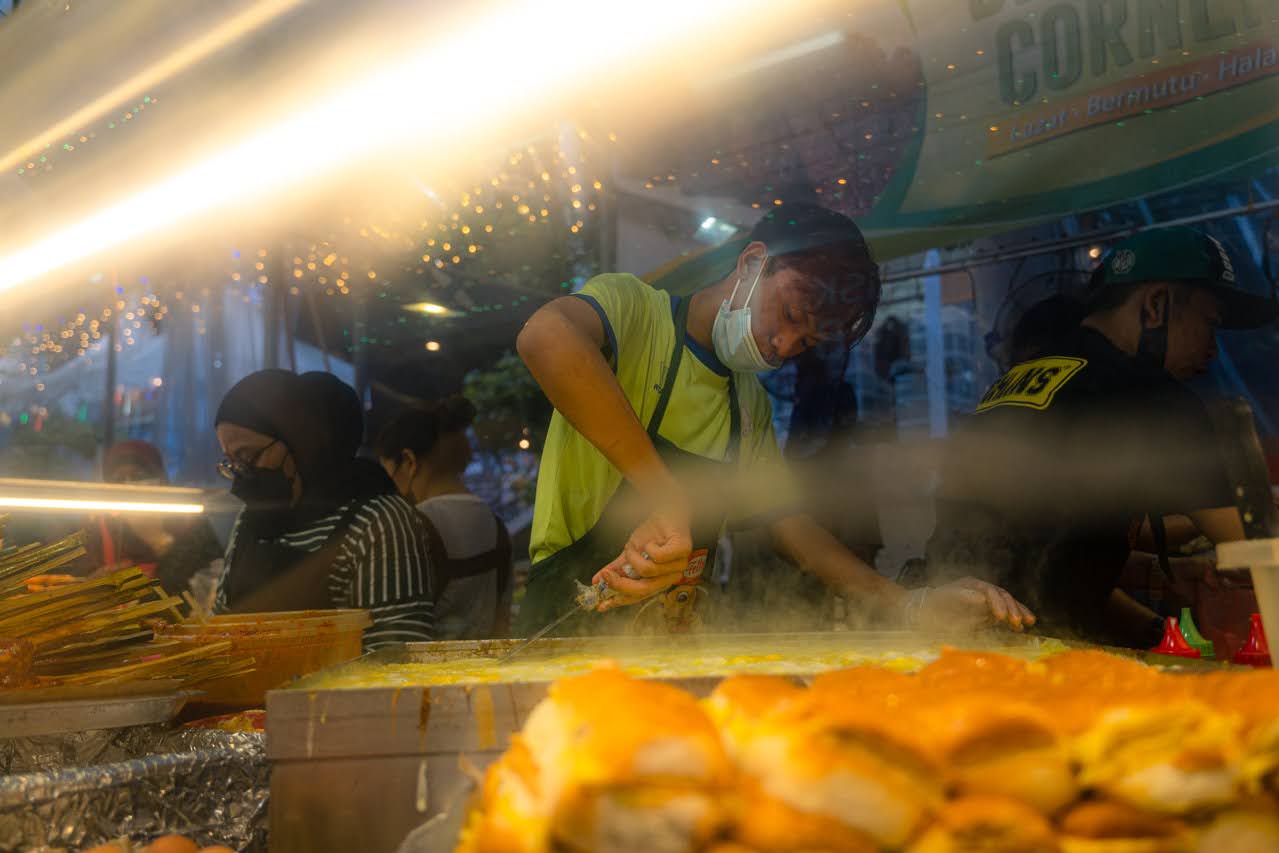Image: Stephanie Lee / RICE File Photo
Larger than your average pasar malam, the annual Ramadan bazaars are where you can get classic street food like roti john, keropok lekor (fish crackers), and sweet kueh. While also doing a spot of shopping for clothes, cars or houses.
Par for the course, really—these festive markets started on the streets of Geylang Serai and Kampong Gelam to serve the local Muslim community to break their daily fast as they prep for the Hari Raya Aidilfitri celebrations.
ADVERTISEMENT
But these days, we see the inevitable complaints pop up online: Too gimmicky. Too expensive. Not enough seats. With five-figure rents pushing bazaar food prices up here, many would rather opt for the bazaars in Johor Bahru instead.
Singaporeans hark back to simpler times when bazaars here were more about community spirit than cease and desist letters and online drama.
“Reflecting on the Ramadan bazaars from the early 2000s certainly brings back many cherished memories. Back when Kampung Melayu was still around (now the site of Wisma Geylang Serai), I believe it held a special place in the hearts of many, especially during Ramadan.
As a teenager, I eagerly anticipated buying all the seasonal favourites—Ramly burgers, deng deng, otak-otak, etc—and then sitting on the steps of Kampung Melayu to break our fast. It was a simple pleasure to share with friends, but it meant a great deal. If we were lucky, we’d even be treated to performances such as kuda kepang or Malay dances. Those were the days when a trip to Johor Bahru to explore their bazaars wasn’t really an option for us.
The Geylang bazaar became the epicentre for the Muslim community to break their fast and shop for Hari Raya, starting from the bazaar itself as we walked down towards the now-closed Tanjong Katong Complex and then to Joo Chiat Complex. Despite the heat, the crowds, and—at times—the inaccessible walkways through the bazaar, it was all worth it. We visited with family, hung out with friends, and some of us even went on dates there.
Observing the Ramadan bazaars now, it’s clear how much they have evolved—from the overall experience to the presentation of the food and decorations. Yet, despite all these changes, what we miss the most is the simplicity and sense of community from those days at Kampung Melayu. It was more than just a place to eat and shop; it was an opportunity to catch up with friends, share cultural experiences, and just chill.”
— Khai
“Growing up, my family didn’t have a lot of money, and we hardly went on overseas trips. Ramadan bazaars and pasar malams were the biggest treats I remember from childhood. It felt like going to a fun fair. It was so festive, and every booth was so tempting.
Even though my cabby dad didn’t earn a lot, he still made sure we were stuffed with goodies: banana fritters, kueh tutu, cotton candy, and the classic Ramly burger. We still go to the bazaars as a family these days—the only difference is now I’m the one paying.”
— Mel
“I have been setting up shop at Ramadan bazaars for a long time—about 25 years. When I first started out, I remember my rent was just $1,500 to $2,000. This year, it is around $15,000.
The rental is killer, but we still try to import quality ingredients like octopus tentacles for our food. It’s not easy, but this is our livelihood. This is how we feed our children.”
— Abdul Mubarak, owner of Satay Kak Pah
ADVERTISEMENT
“I miss the era before Instagrammable food became a thing. The vibe back then was more like a pasar malam than some fancy food festival.
When I was still in primary school, my family would head to the bazaars at least once or twice. I’d get $10 to spend on anything I wanted. I remember being so excited and spoiled for choice. That $10 was enough to buy me some delicious fried goods and a drink full of sugar and food colouring. I’d even have some money left over.”
— Claudia
“It’s tragic that bazaar vendors these days have little choice but to up the ante with gimmicks just to attract young people to come by and try out their hyped-up food. Using dry ice and making everything rainbow-coloured for pure aesthetics is just sad. Covering everything up in nacho cheese/barbecue sauce/mayonnaise just to make up for the mediocre taste is sadder.
Here’s what I miss from the Ramadan bazaars of old: the focus on quality. I’ve had more than my fair share of experiences being short-changed by vendors selling cold, soggy food and charging premium prices. A few days ago, I paid $10 for two bags of keropok lekor that were so tough to chew and tasteless that I threw them away. A $6 Ramly Burger I bought had dry-ass patties that might have been sitting on the grill for way too long.
I miss the days when vendors cared enough to make sure customers liked their food. I completely understand the price hike, and I’m more than happy to pay—but at least make sure what you’re selling tastes decent. I don’t need vapour coming out of my food; I just need it to taste good.
If you ask me, the declining quality of taste for basic bazaar food (ayam percik, keropok, Ramly burger, roti john, etc) is the reason for declining footfall. This perpetuates the reason for vendors to rely on useless gimmickry to keep customers interested. What a vicious cycle!”
— Fareed






